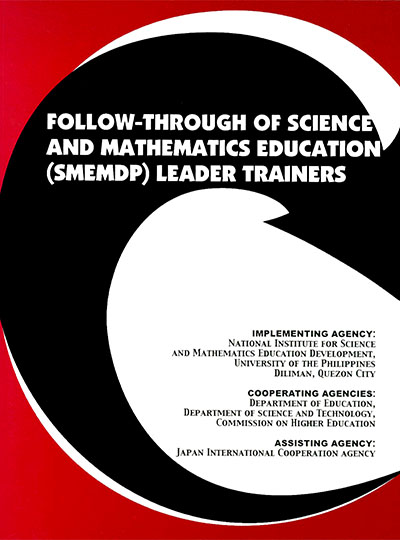-
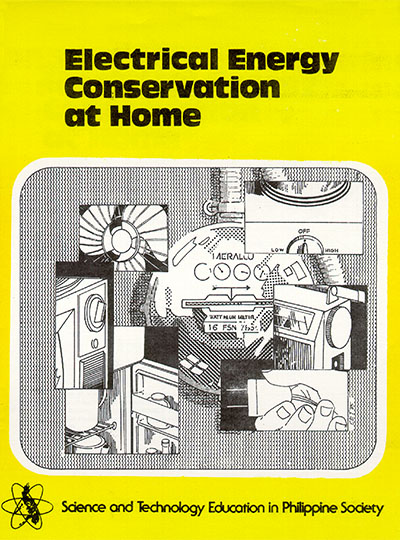 Electrical Energy Conservation at Home Maxima J. Acelajado & Aurora B. Mendoza ISBN 971-135-096-3 Published by ISMED July 1985 No. of Pages: 21 ____________ This is a module intended for second year high school students. It contains discussions and activities on the effect of electric power and time on electrical energy consumption, reading an electric meter and computing electric bills. Also included is a section on how to minimize electrical energy wastage.
Electrical Energy Conservation at Home Maxima J. Acelajado & Aurora B. Mendoza ISBN 971-135-096-3 Published by ISMED July 1985 No. of Pages: 21 ____________ This is a module intended for second year high school students. It contains discussions and activities on the effect of electric power and time on electrical energy consumption, reading an electric meter and computing electric bills. Also included is a section on how to minimize electrical energy wastage. -
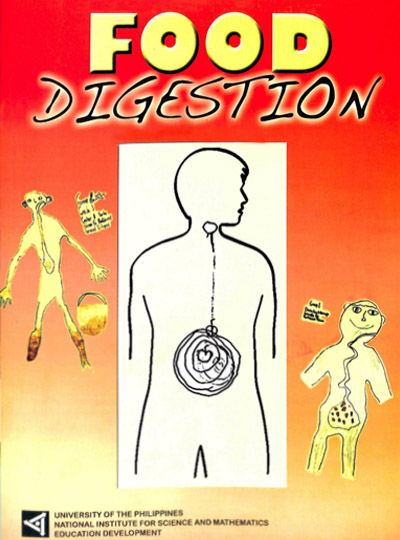 Pupil’s Activities & Teacher’s Material Lourdes R. Carale ISBN 978-971-570-135-8 Published by NISMED 2009 No. of Pages: 34 ____________ These teacher material and pupils' activities on the digestive system were developed under the Science and Mathematics Education Manpower Development Project (SMEMDP) sponsored by the Japan International Cooperation Agency (JICA). They have been tried out in countless teacher training programs, and also with children in connection with a research project, reviewed by experts with regard to accuracy of content, and revised for classroom use.
Pupil’s Activities & Teacher’s Material Lourdes R. Carale ISBN 978-971-570-135-8 Published by NISMED 2009 No. of Pages: 34 ____________ These teacher material and pupils' activities on the digestive system were developed under the Science and Mathematics Education Manpower Development Project (SMEMDP) sponsored by the Japan International Cooperation Agency (JICA). They have been tried out in countless teacher training programs, and also with children in connection with a research project, reviewed by experts with regard to accuracy of content, and revised for classroom use. -
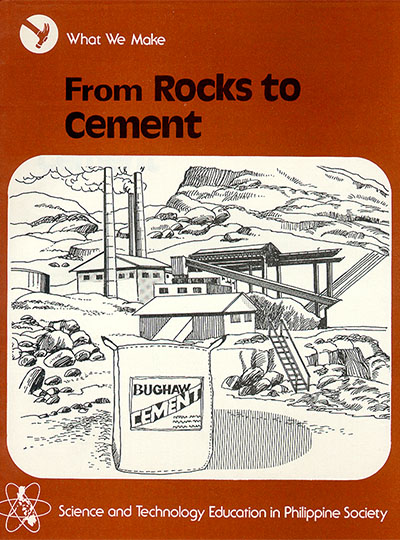 From Rocks to Cement Pilar da Silva ISBN 971-135-030-0 Published by UP SEC April 1982 No of Pages: 17 ____________
From Rocks to Cement Pilar da Silva ISBN 971-135-030-0 Published by UP SEC April 1982 No of Pages: 17 ____________This module describes how nature changes rocks into materials used in the manufacture of cement. It gives the types of rocks on land and their formation. The process by which nature changes rocks into materials needed in the manufacture of cement are discussed at length.
The steps in the commercial preparation of cement are described in detail. The glossary contains technical terms and their definitions.
The Appendix provides answers to the questions and the self-tests in the module. It also includes a discussion of the chemical changes that take place when cement mixes with water to form concrete.
-
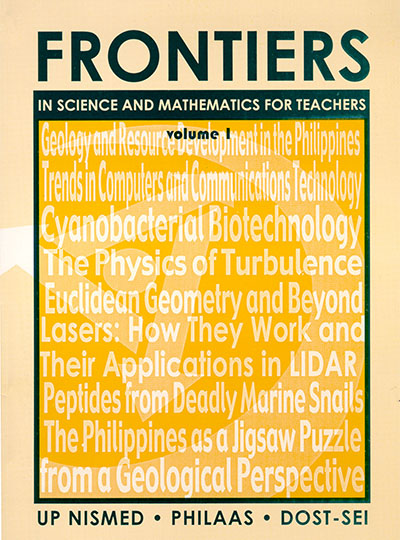
V.M. Talisayon & L.G. Tansinsin ISBN 971-570-090-X Published by NISMED November 2000
No of Pages: 103
____________
This sourcebook for science and mathematics teachers contains the lectures of scientists and mathematicians in the country delivered in the Frontiers in Science Lecture Series for Teachers, a project sponsored by the UP NISMED and initially, by the Philippine Association for the Advancement of Science (PHILAAS). The lectures were partly funded by the Science Education Institute-Department of Science and Technology (DOST-SEI). The main purpose of this ourcebook is to disseminate the outputs of the lecture series, especially to those who were not able to attend the lectures. It includes the following topics: The Physics of Turbulence; Lasers: How They Work and Their Application in LIDAR; Geology and Resource Development in the Philippines; The Philippines as a Jigsaw Puzzle from a Geological Perspective; Cyanobacterial Biotechnology; Peptides from Deadly Marine Snails; Trends in Computers and Communications Technologies; and Euclidean Geometry and Beyond.
-
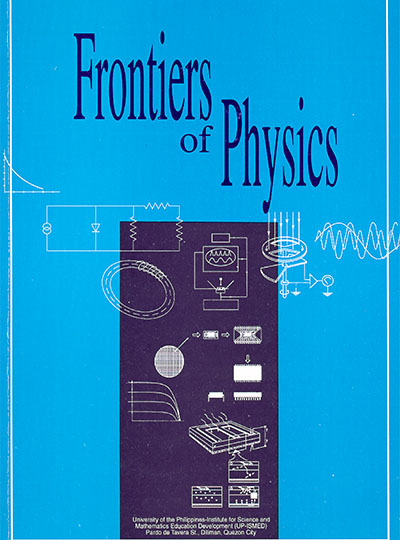
Henry J. Ramos, et al. ISBN 971-8693-19-X Published by ISMED 1994
No of Pages: 160
____________
This volume Frontiers of Physics is a compilation of lectures delivered by Filipino scientists who are in the forefront of new developments in physics research and theory, during a lecture series sponsored by the Institute for Science and Mathematics Education Development for Physics teachers. The lecture series aimed to give physics teachers a holistic view of physical theories and to update them on the new developments in 20th century physics.
Frontiers of Physics is a resource book for physics teachers as well as for students. The papers are written in a style understandable even to non-physicist.
-
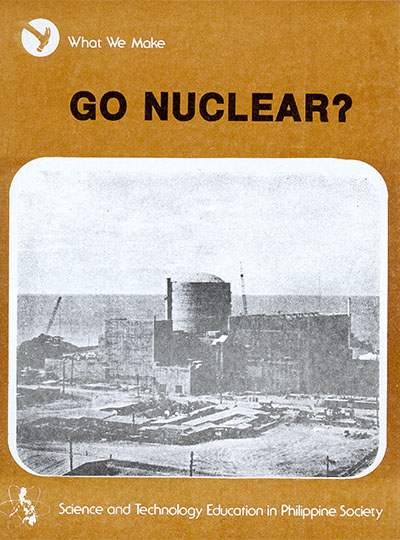 Go Nuclear? O. Ungson, V. Talisayon & T. Hontiveros ISBN 971-135-069-6 Published by ISMED March 1984 No of Pages: 15 ____________ Go nuclear, in a dialogue, aims to give some facts, explain some issues and science concepts about the nuclear plant: its construction, production of electricity, nuclear reactions involved, control over nuclear reactions, benefits of having the plant, comparison of cost and dangers of the plant with those using oil or coal, and effects of the plant on the economic situation and relationship with foreign groups.
Go Nuclear? O. Ungson, V. Talisayon & T. Hontiveros ISBN 971-135-069-6 Published by ISMED March 1984 No of Pages: 15 ____________ Go nuclear, in a dialogue, aims to give some facts, explain some issues and science concepts about the nuclear plant: its construction, production of electricity, nuclear reactions involved, control over nuclear reactions, benefits of having the plant, comparison of cost and dangers of the plant with those using oil or coal, and effects of the plant on the economic situation and relationship with foreign groups. -
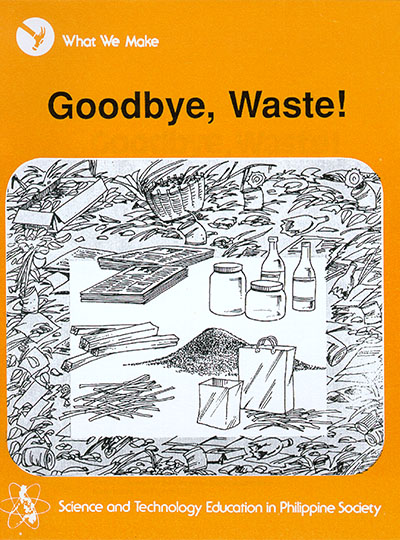 Goodbye Waste Lourdes R. Carale ISBN 971-135-050-5 Published by UP SEC December 1983 No of Pages: 27 ____________ This learning module presents a way of minimizing the garbage problem through waste recycling. It suggests presorting of waste according to the 5-fs, namely, factory materials, future use materials, fuel, feeds, and fertilizer, thereby encouraging maximum utilization of materials otherwise thrown away/wasted. The module proceeds with a more detailed discussion of converting waste into organic fertilizer (compost) including the procedure and science ideas involved. Built into the module is the development of positive attitudes towards the merits of recycling.
Goodbye Waste Lourdes R. Carale ISBN 971-135-050-5 Published by UP SEC December 1983 No of Pages: 27 ____________ This learning module presents a way of minimizing the garbage problem through waste recycling. It suggests presorting of waste according to the 5-fs, namely, factory materials, future use materials, fuel, feeds, and fertilizer, thereby encouraging maximum utilization of materials otherwise thrown away/wasted. The module proceeds with a more detailed discussion of converting waste into organic fertilizer (compost) including the procedure and science ideas involved. Built into the module is the development of positive attitudes towards the merits of recycling. -
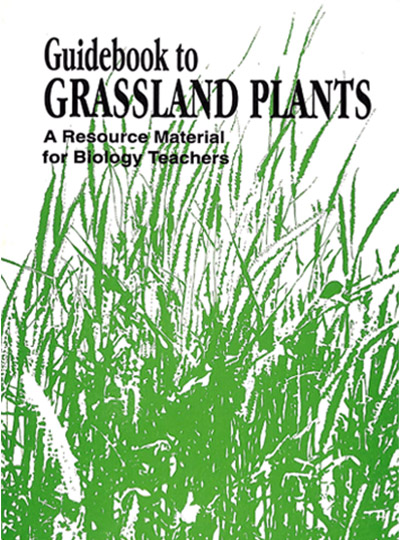
Jose Luis O. Carballo, et al ISBN 971-137-010-7 Published by PUNDASYON 1983
No. of Pages: 178 ____________
This is a resource material for biology teachers which uses the environment as a teaching resource. It presents a practical and comprehensive guide to the identification of 200 plant species commonly found in our grassland under five groupings: forage, medicinal plants, weeds, plants with economic use, other plants associated with this ecosystem. Each species is accompanied by a brief non-technical description, a line drawing, and an updated taxonomic key.
-
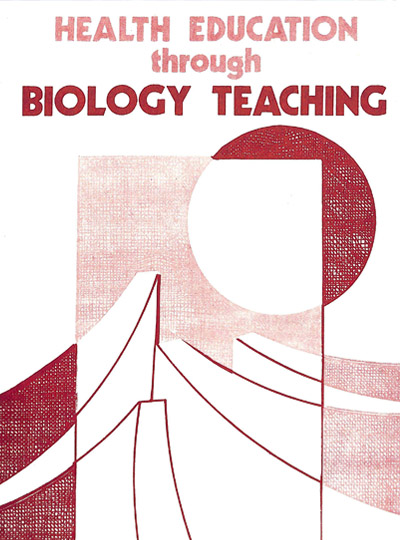 Health Education Through Biology Teaching Gerhard Schaefer & Dolores F. Hernandez, eds. ISBN 971-135-079-1 1985 ____________ This booklet reports the first results of a health education project of the Commission for Biological Education (CBE) of the International Union of the Biological Sciences (IUBS). Comparisons of the concept of health held by students in six countries and the status of health education curriculum in these countries are presented. Practical suggestions are offered to the teacher through curriculum maps and teaching strategies which facilitate the integration of health into biology teaching.
Health Education Through Biology Teaching Gerhard Schaefer & Dolores F. Hernandez, eds. ISBN 971-135-079-1 1985 ____________ This booklet reports the first results of a health education project of the Commission for Biological Education (CBE) of the International Union of the Biological Sciences (IUBS). Comparisons of the concept of health held by students in six countries and the status of health education curriculum in these countries are presented. Practical suggestions are offered to the teacher through curriculum maps and teaching strategies which facilitate the integration of health into biology teaching. -
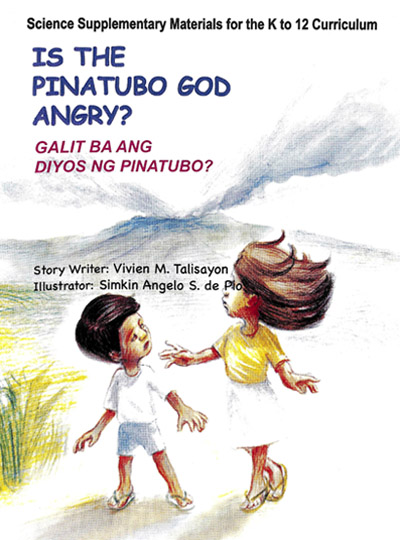 Is the Pinatubo God Angry? Vivien M. Talisayon ISBN 971-570-094-2 Published by NISMED November 2014
Is the Pinatubo God Angry? Vivien M. Talisayon ISBN 971-570-094-2 Published by NISMED November 2014No of Pages: 24
____________
The story brings out a cultural dimension that is outside the domain of science and, thus, is not confirmed nor denied. However, the story gives a scientific explanation of the eruption of Mount Pinatubo on June 12, 1991, which had worldwide effects.
The book can be made interactive by pausing on pages 6-8 and asking the children what they think about the Pinatubo god. After pages 11-12, children can also be asked what they think is the scientific explanation for the Mt. Pinatubo eruption.
This story may be used as motivation, supplementary materials, or part of lessons in Grade 6.
-
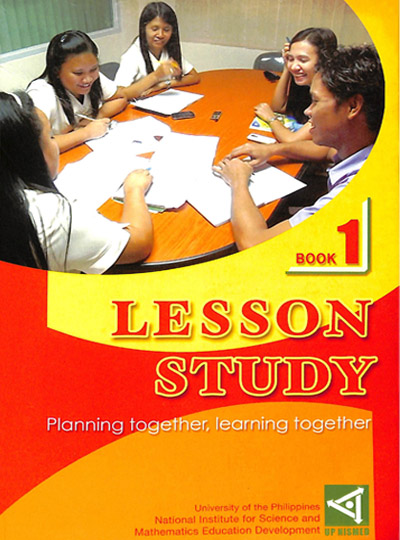 Soledad A. Ulep, et al. (Eds.) UP NISMED ISBN 978-971-570-145-7 Published by NISMED August 2013
Soledad A. Ulep, et al. (Eds.) UP NISMED ISBN 978-971-570-145-7 Published by NISMED August 2013No of Pages: 258
____________
This book is a documentation of actual experiences of teachers and students in mathematics and science classes as well as learnings arising from these experiences. As a compilation, these chapters highlight the opportunities provided for students to learn mathematics through problem solving and science through inquiry. A common theme permeates all the chapters - both teachers and students are learning through lesson study.
This collection of chapters is an innovative initiative that lays the groundwork for an implementable model of lesson study in the Philippine setting. It is NISMED's contribution to the ongoing search for a model of professional development that can be adapted in spite of large classes, dearth of resources, and a host of challenges faced by Filipino teachers.

